India is home to a diverse array of stunning gardens, each with its own unique history, design, and charm. Here are some of the most famous and beautiful gardens in India:
Northern India:
Mughal Gardens, Srinagar: This historical garden complex, located in Kashmir, is renowned for its terraced layouts, cascading fountains, and vibrant floral displays. The gardens were built by Mughal emperors and are considered masterpieces of Persian gardening design.
Pinjore Gardens, Chandigarh: Known as the “Garden of Happiness,” this Mughal-inspired garden features manicured lawns, fountains, and pavilions. It’s a popular spot for leisure activities and offers stunning views of the surrounding Shivalik hills.
Rishikesh Valley of Flowers: This UNESCO World Heritage Site boasts a breathtaking meadow carpeted with wildflowers during the monsoon season. The diverse flora and fauna make it a haven for nature lovers and trekkers.
Royal Botanical Garden, Kolkata: Established in 1786, this is one of the oldest botanical gardens in Asia. It houses a vast collection of plants from around the world and is a popular destination for research and education.
Western India:
Lalbagh Botanical Garden, Bangalore: This sprawling garden is home to over 1,800 species of plants, including rare and exotic ones. It’s famous for its annual flower show, Glass House, and bonsai collection.
Hanging Gardens of Mumbai: Perched atop Malabar Hill, these terraced gardens offer stunning panoramic views of the city skyline. They are a popular spot for picnics, walks, and enjoying the sunset.
Ooty Botanical Garden: Situated in the Nilgiri Hills, this garden is known for its vast collection of roses, rhododendrons, and other ornamental plants. It also features a Japanese garden, a glasshouse, and a treetop walkway.
Sajjan Niwas Garden, Udaipur: This picturesque garden, located on the banks of Lake Pichola, features fountains, sculptures, and a variety of plants and trees. It offers a serene atmosphere and stunning views of the lake and the City Palace.
Southern India:
Brindavan Gardens, Mysore: This terraced garden is a popular tourist destination known for its musical fountains, illuminated walkways, and intricate floral carpets. The dancing fountains synchronized with music and light are a major highlight.
Botanical Garden, Ooty: Nestled in the Nilgiri Hills, this garden boasts a diverse collection of flora, including a rose garden, orchidarium, and fernery. It’s a serene spot for nature lovers and offers breathtaking views of the surrounding hills.
Periyar National Park: This wildlife sanctuary is home to a variety of animals, including tigers, elephants, and gaurs. It also boasts beautiful landscapes, including a scenic lake and lush forests. Visitors can enjoy boat rides, jeep safaris, and trekking through the park.
Munnar Hill Station: This hill station, located in the Western Ghats, is known for its rolling hills, lush tea plantations, and stunning waterfalls. It’s a popular destination for trekking, camping, and enjoying the cool mountain air.
Eastern India:
Indian Botanic Garden, Kolkata: Established in 1787, this is one of the oldest botanical gardens in Asia. It houses a vast collection of plants from around the world, including the Great Banyan Tree, one of the largest trees in the world.
Acharya Jagadish Chandra Bose Indian Botanic Garden, Shibpur: This garden is home to a diverse collection of plants, including orchids, cacti, and medicinal plants. It’s a popular spot for research, education, and leisure activities.
Victoria Memorial Garden, Kolkata: Located in the heart of Kolkata, this garden is known for its manicured lawns, fountains, and statues. It’s a popular spot for picnics, walks, and enjoying the outdoors.
This list only scratches the surface of the many beautiful gardens in India. Each region has its own unique offerings, and there is something for everyone to enjoy.
Here are some additional factors to consider when choosing a garden to visit:
Your interests: Do you prefer formal gardens with manicured lawns and flowerbeds, or do you prefer natural gardens with native plants and wildlife?
The time of year: Some gardens are best visited during specific seasons when the flowers are in bloom.
Accessibility: Consider the location of the garden and how easy it is to get there.
Entrance fees: Some gardens have entrance fees, while others are free to visit.
By planning your visit in advance and considering your interests and needs, you can ensure you have a memorable and enjoyable experience exploring the beautiful gardens of India.
What is Botanical garden
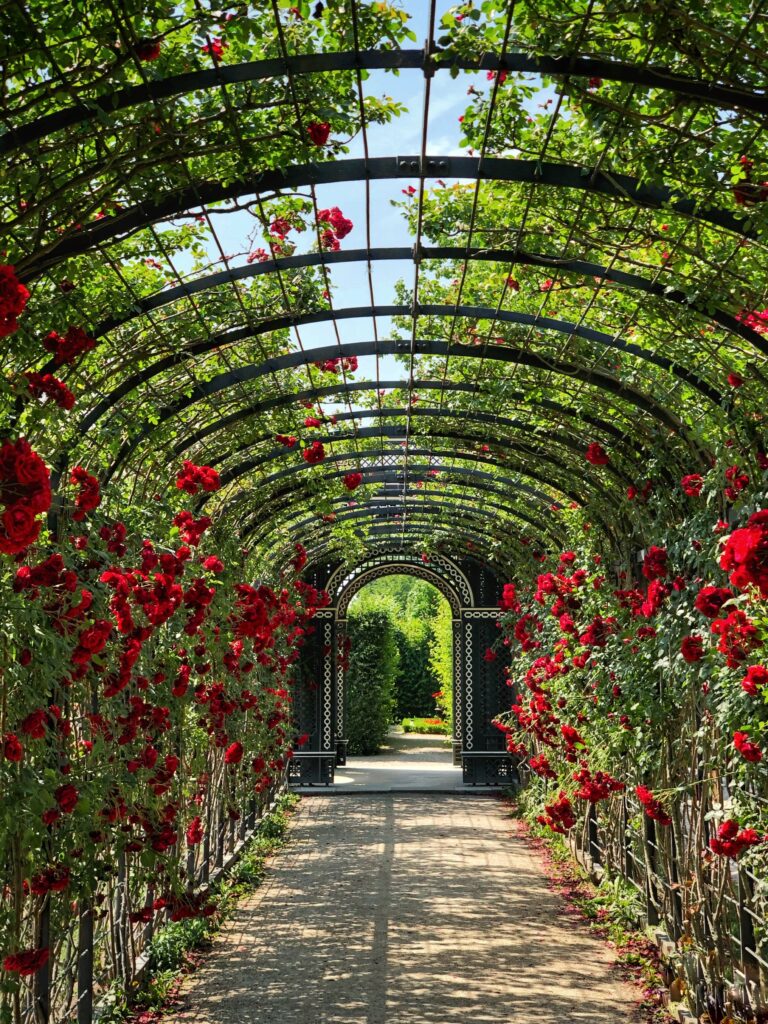
A botanical garden is a cultivated collection of plants, usually organized by scientific classifications. They serve various purposes, including:
1. Conservation: Botanical gardens play a crucial role in ex situ conservation, preserving rare and endangered plants. They provide safe havens for these plants and allow for controlled breeding programs to prevent extinction.
2. Research: Botanical gardens are vital centers for research in botany, horticulture, and related fields. Scientists use them to study plant biology, develop new cultivars, and identify potential solutions to environmental challenges.
3. Education: Botanical gardens serve as outdoor classrooms, providing educational opportunities for students and the general public. Visitors can learn about plant diversity, ecology, and the importance of plant conservation.
4. Recreation and Leisure: Botanical gardens offer a peaceful and beautiful environment for relaxation and leisure activities. Visitors can enjoy strolling through the gardens, observing different plants, and appreciating the natural beauty.
5. Public Engagement: Botanical gardens foster a connection between the public and the natural world. They promote awareness of plant diversity, the importance of conservation, and the benefits of sustainable practices.
Here are some key characteristics of a botanical garden:
Documented collection: Plants in a botanical garden are documented with their scientific names, origin, and other relevant information.
Scientific management: The collection is managed by trained horticulturists and botanists who ensure its preservation and growth.
Public access: Most botanical gardens are open to the public, providing opportunities for education and enjoyment.
Special facilities: Many botanical gardens have libraries, herbaria, greenhouses, and laboratories for research and educational purposes.
Diverse collection: Botanical gardens typically showcase a wide variety of plants, including native species, exotic plants, and rare and endangered species.
Overall, botanical gardens play a crucial role in plant conservation, research, education, and public engagement. They are valuable resources for scientists, students, and the general public, offering opportunities to learn about and appreciate the plant world.
Normal Garden V/S Botanical garden
| Feature | Normal Garden | Botanical Garden |
|---|---|---|
| Purpose | Primarily for aesthetic pleasure and recreation | Primarily for research, conservation, and education |
| Plant collection | Diverse, but may not be organized or labeled | Diverse and organized by scientific classifications, with labeled specimens |
| Management | May be maintained by the owner or a landscaper | Managed by trained horticulturists and botanists |
| Accessibility | May be private or public, with varying levels of accessibility | Typically open to the public, with some areas restricted for research purposes |
| Special features | May include lawns, flower beds, trees, shrubs, and other decorative elements | May include greenhouses, herbaria, libraries, laboratories, and research facilities |
| Educational value | Limited | High, with opportunities for guided tours, educational programs, and self-directed learning |
| Conservation efforts | May not actively participate in conservation efforts | May actively participate in conservation efforts, including ex situ conservation of rare and endangered plants |
| Overall focus | Aesthetics and personal enjoyment | Scientific research, education, and conservation |
Additional differences:
Size: Normal gardens are typically smaller than botanical gardens.
Plant diversity: Botanical gardens usually have a wider variety of plants than normal gardens.
Funding: Normal gardens are typically funded by their owners, while botanical gardens may receive funding from public or private sources.
Research activities: Normal gardens typically do not conduct research, while botanical gardens often have active research programs.
Ultimately, the best type of garden for you depends on your needs and interests. If you are looking for a beautiful place to relax and enjoy nature, a normal garden may be a good choice. However, if you are interested in learning about plants, supporting conservation efforts, or conducting research, a botanical garden would be a better option.
How many botanical garden in india ?
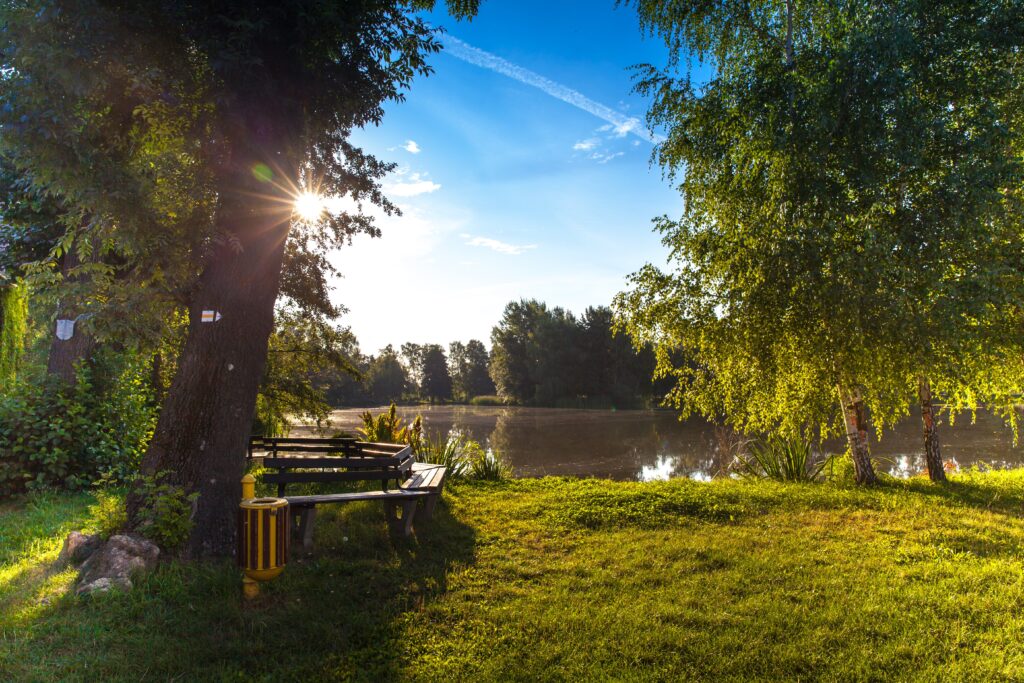
There are approximately 122 botanical gardens recorded in India. This number is not static and can vary slightly depending on how a “botanical garden” is defined and the criteria used to categorize them. Some sources may include smaller gardens maintained by universities or research institutions, while others may focus only on larger, established gardens open to the public.
Here are some resources where you can find information about botanical gardens in India:
Convention on Biological Diversity: https://www.mondaq.com/india/climate-change/1215386/beacon-of-hope-for-the-planet—convention–on-biological-diversity–is-india-aligned-to-the-convention
Botanical Survey of India: https://bsi.gov.in/
Unacademy: https://unacademy.com/content/railway-exam/study-material/general-awareness/a-brief-note-on-botanical-gardens-in-india/
List of Botanical Gardens in India – Wikipedia: https://en.wikipedia.org/wiki/List_of_botanical_gardens_in_India
These resources provide information about individual gardens, including their location, history, collections, and visiting hours.
Here are some of the most famous and well-maintained botanical gardens in India:
- Acharya Jagadish Chandra Bose Indian Botanic Garden (Kolkata)
- Lalbagh Botanical Garden (Bangalore)
- Brindavan Gardens (Mysore)
- Ooty Botanical Garden
- Pinjore Gardens (Chandigarh)
- Mughal Gardens (Srinagar)
- Sajjan Niwas Garden (Udaipur)
These gardens are known for their beautiful landscapes, diverse plant collections, and historical significance. They are popular tourist destinations and offer educational opportunities for visitors of all ages.
first botanical garden in india
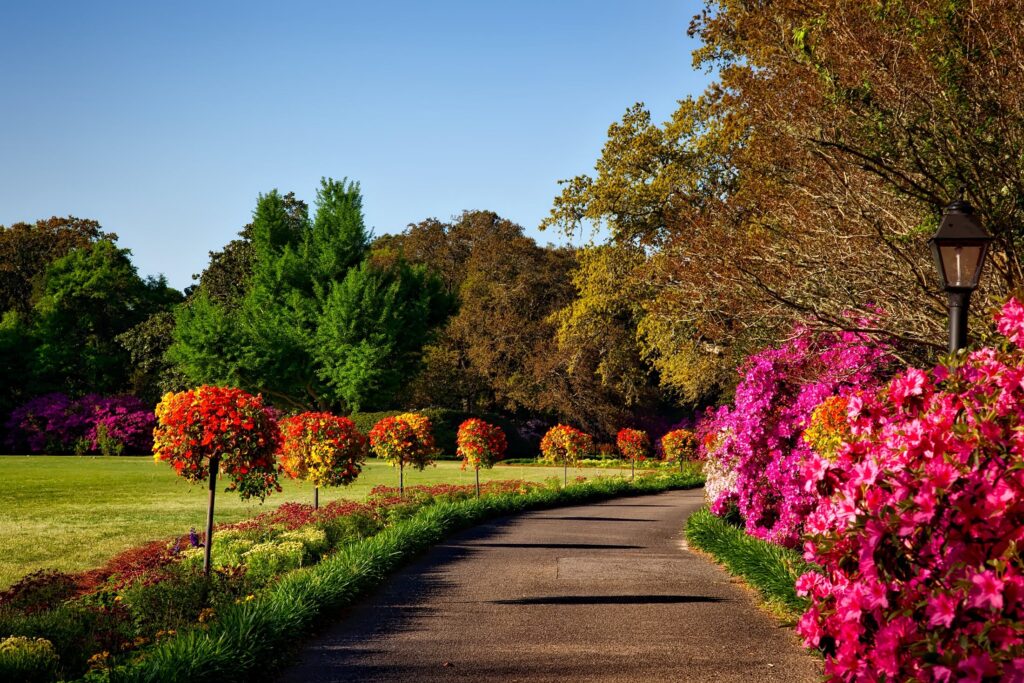
The Acharya Jagadish Chandra Bose Indian Botanic Garden, formerly known as the Indian Botanic Garden and the Calcutta Botanic Garden, holds the distinction of being the first botanical garden established in India. It was founded in 1787 by Colonel Robert Kyd, a surgeon in the East India Company, and is located in Shibpur, Howrah, near Kolkata.
The garden boasts a rich history and has played a crucial role in plant research, conservation, and education in India. It houses a diverse collection of over 14,000 plant species, including rare and endangered plants, medicinal herbs, and exotic flora. The iconic Great Banyan Tree, one of the largest trees in the world by aerial root spread, is a major attraction within the garden.
The Acharya Jagadish Chandra Bose Indian Botanic Garden continues to be a vibrant center for plant research and conservation, attracting visitors from all over the world. It stands as a testament to the long-standing tradition of botanical study and exploration in India.
What is tulip garden ?
A tulip garden is a designated space dedicated to the cultivation and display of tulips. These colorful flowers come in a wide variety of hues and bloom during the spring season, creating a vibrant and picturesque spectacle.
Here are some key characteristics of a tulip garden:
1. Dedicated space for tulips: The garden is designed specifically for planting and showcasing tulip bulbs. This ensures optimal growing conditions and allows for organized displays.
2. Diverse tulip varieties: Most tulip gardens feature a wide array of tulip cultivars, showcasing the vast range of colors, shapes, and sizes these flowers offer.
3. Seasonal blooms: The main attraction of a tulip garden is the vibrant display of blooming tulips during the spring season. This typically occurs between March and May in most regions.
4. Aesthetically pleasing layout: Tulip gardens are often designed with an emphasis on aesthetics, incorporating landscaping elements like walkways, fountains, and other decorative features to enhance the visitor experience.
5. Educational and recreational value: Many tulip gardens provide educational information about tulips, their history, cultivation, and different varieties. They also serve as recreational spaces for visitors to enjoy the beauty of nature and relax in a peaceful environment.
Here are some additional facts about tulip gardens:
Origin: The first tulip gardens were established in the Ottoman Empire during the 17th century.
Popularity: Tulip gardens are popular tourist destinations, attracting visitors from around the world.
Economic benefits: Tulip cultivation and tourism associated with tulip gardens can provide significant economic benefits for local communities.
Conservation efforts: Some tulip gardens play a role in the conservation of rare and endangered tulip species.
Overall, a tulip garden offers a unique opportunity to appreciate the beauty and diversity of these iconic spring flowers. Whether you’re a gardening enthusiast or simply seeking a delightful outdoor experience, a visit to a tulip garden is sure to leave you with lasting memories.
Where is tulip garden in india ?
India boasts several beautiful tulip gardens, each offering a unique experience. Here are some of the most popular ones:
Indira Gandhi Memorial Tulip Garden, Srinagar:
Location: Srinagar, Jammu and Kashmir.
Largest tulip garden in Asia with over 15 million tulip bulbs planted across 30 hectares.
Open from March to May during the tulip blooming season.
Offers breathtaking views of the Dal Lake and Zabarwan mountains.
Features a variety of tulip cultivars in vibrant colors.
Organizes various cultural events during the blooming season.
Mughal Gardens, Jammu and Kashmir:
Location: Srinagar, Jammu and Kashmir.
Situated within the historic Mughal complex, offering a picturesque setting.
Features terraced gardens with colorful flowers, including tulips.
Open from March to May, often overlapping with the tulip bloom in the Indira Gandhi Memorial Tulip Garden.
Offers a glimpse into Mughal gardening traditions.
Tulip Garden, Munsiyari, Uttarakhand:
Location: Munsiyari, Uttarakhand.
Nestled amidst the Himalayas, offering stunning mountain views.
Comprises 7 hectares of land with a variety of tulip colors.
Open from April to May during the peak blooming season.
Provides a serene and peaceful environment.
Other notable tulip gardens in India include:
Tulip Garden, Ooty, Tamil Nadu
Indira Priyadarshini Tulip Garden, Pahalgam, Jammu and Kashmir
Tulip Garden, Darjeeling, West Bengal
Sirpur Wetland Tulip Garden, Surajpur, Chhattisgarh
To help you choose the best garden for your visit, consider the following factors:
Location: Choose a garden that is conveniently accessible to you.
Blooming season: Ensure you visit during the tulip blooming season, which typically falls between March and May.
Personal preferences: Consider your preferred landscape setting, garden size, and other amenities offered by each garden.
No matter which tulip garden you choose, you’re guaranteed a remarkable experience surrounded by the vibrant beauty of these spring flowers.
Where is the rock garden in india ?
The most famous Rock Garden in India is located in Chandigarh. It is known as the “Nek Chand’s Rock Garden” and is a unique sculpture garden created by Nek Chand Saini, a government official, in his spare time. The Rock Garden is situated near Sukhna Lake in Sector 1 of Chandigarh, India. Nek Chand started building the garden secretly in 1957 and continued to expand it over the years. The garden is made entirely of industrial and home waste and thrown-away items, and it features a series of interconnected courtyards with sculptures made from recycled materials such as ceramics, glass, and other discarded items. The Rock Garden of Chandigarh is now a popular tourist attraction and an example of creative recycling and environmental sustainability.
How many butterfly garden in india
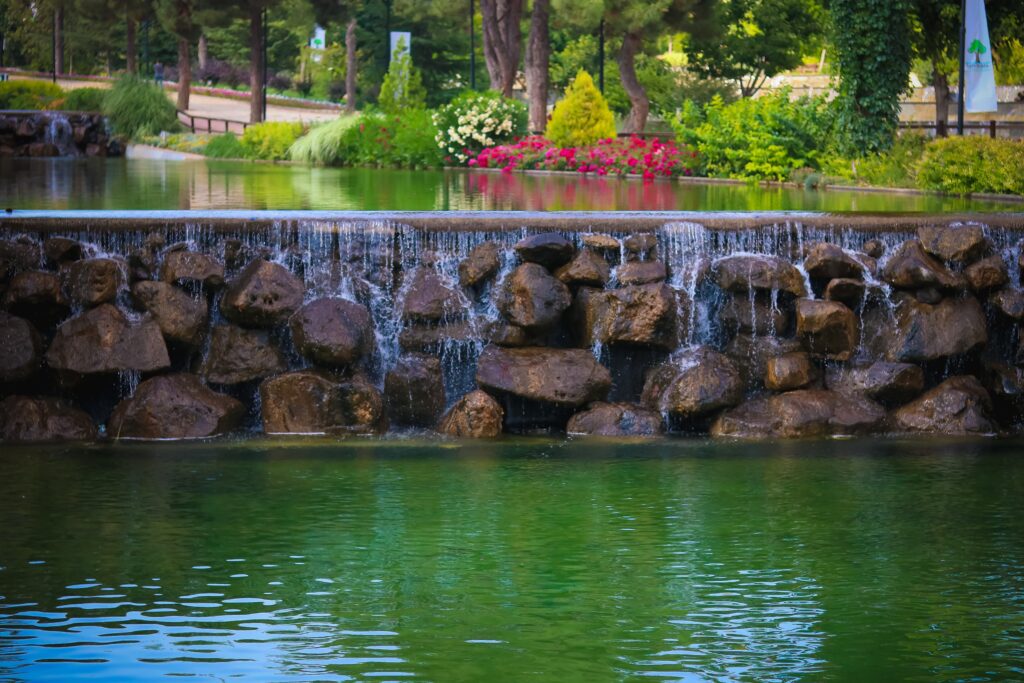
Determining the exact number of butterfly gardens in India is challenging because definitions and classifications vary. However, based on available information, here’s an estimate:
Approximately 80-100 butterfly gardens exist in India. This number includes:
Public butterfly parks: These are open to the public and often charge an entrance fee. Examples include Butterfly Park in Bangalore, Thenmala Butterfly Park in Kerala, and Sammilan Shetty Butterfly Park in Mangalore.
Private butterfly gardens: These are owned and managed by individuals or organizations but may offer limited public access.
Butterfly enclosures: These are smaller spaces within larger gardens or zoos that focus specifically on butterflies.
Butterfly conservation areas: These prioritize conservation efforts and may not be readily accessible to the public.
Here are some resources to help you find specific butterfly gardens in India:
Google Maps: Search for “butterfly garden near me” or use keywords like “butterfly park” or “butterfly conservatory” along with the city or region name.
Butterfly Conservation Society of India: https://www.ifoundbutterflies.org/node/14
Wildlife India: https://www.thewildlifeindia.com/
Local tourism websites: Many state and city tourism websites list butterfly gardens as attractions.
Remember, the number of butterfly gardens can fluctuate due to closures, new developments, and varying definitions.
How to build a terrace garden in india
Building a thriving terrace garden in India requires careful planning and execution. Here’s a comprehensive guide to help you get started:
1. Assess Your Terrace:
Space: Measure your terrace to determine the available area for gardening.
Sunlight: Analyze the sunlight exposure throughout the day. Most vegetables require at least 6 hours of direct sunlight.
Structural integrity: Ensure your terrace can support the weight of soil, pots, and plants.
Drainage: Check for proper drainage to avoid waterlogging.
2. Plan Your Layout:
Sketch a layout: Decide on the location of pots, raised beds, seating areas, and walkways.
Group plants: Consider grouping plants with similar sunlight and watering needs.
Choose containers: Select suitable containers based on plant size and drainage needs. Consider using recycled materials like pots, buckets, and crates.
Optimize space: Utilize vertical space using hanging baskets, tiered planters, and climbing trellises.
3. Prepare the Soil and Drainage:
Soil mix: Use a well-draining potting mix or create your own by combining garden soil, compost, and sand.
Drainage layer: Add a layer of gravel or broken terracotta pots at the bottom of containers to improve drainage.
Mulching: Apply a layer of organic mulch to retain moisture and suppress weeds.
4. Choose Your Plants:
Select plants suitable for Indian climate: Consider factors like sunlight, temperature, and rainfall.
Start with easy-to-grow vegetables: Herbs like coriander, mint, and basil, leafy greens like spinach and lettuce, and fruiting vegetables like tomatoes and chilies are good options for beginners.
Choose native plants: Native plants are adapted to local conditions and require less maintenance.
Mix ornamental and edible plants: Create a visually appealing and productive garden.
5. Planting and Care:
Plant seeds or seedlings: Follow proper planting instructions for each type of plant.
Watering: Water regularly, considering the climate and plant needs.
Fertilizing: Use organic fertilizers like compost or vermicompost to nourish your plants.
Pest and disease control: Monitor your plants for pests and diseases and use organic methods to control them.
Pruning and harvesting: Prune your plants regularly to encourage growth and harvest produce when ripe.
Additional tips for building a terrace garden in India:
Use seasonality to your advantage: Plant seasonal vegetables and flowers to ensure continuous harvest.
Conserve water: Implement rainwater harvesting techniques and use water-efficient irrigation methods.
Attract pollinators: Plant flowers that attract bees, butterflies, and other pollinators to help with fruit production.
Create a microclimate: Use shade cloths or windbreaks to protect your plants from harsh weather conditions.
Compost kitchen scraps: This provides organic fertilizer for your plants and reduces waste.
Join gardening communities: Connect with local gardening groups and online forums for support and advice.
By following these steps and adapting them to your specific conditions and preferences, you can enjoy a thriving and rewarding terrace garden in India. Remember, gardening is a learning process, so don’t be discouraged by setbacks. Experiment, have fun, and enjoy the fruits (and vegetables!) of your labor!
How to make rooftop vegetable garden in india
Building a thriving rooftop vegetable garden in India requires careful planning and execution, but it can be a rewarding experience, providing fresh produce and a beautiful green space. Here’s a comprehensive guide to help you get started, incorporating safety guidelines:
1. Assess Your Roof:
Space: Measure your rooftop to determine the available area for gardening.
Access: Ensure safe and easy access to your rooftop for watering, tending, and harvesting.
Weight-bearing capacity: Consult your building’s management or a structural engineer to ensure your rooftop can safely handle the weight of soil, containers, and plants.
Sunlight and wind: Analyze the sunlight exposure throughout the day and prevailing wind patterns. Most vegetables require at least 6 hours of direct sunlight and protection from strong winds.
Drainage: Ensure proper drainage to avoid waterlogging, which can damage the roof and plants.
2. Plan Your Layout:
Sketch a layout: Decide on the location of raised beds, containers, seating areas, and walkways. Consider utilizing vertical space with hanging baskets, tiered planters, and climbing trellises.
Group plants: Group plants with similar sunlight and watering needs to optimize care.
Choose containers: Select suitable containers based on plant size and drainage needs. Consider using recycled materials like pots, buckets, and crates.
Choose vegetables: Select vegetables suitable for Indian climate and your local growing season. Start with easy-to-grow vegetables like herbs (coriander, mint, basil), leafy greens (spinach, lettuce), and fruiting vegetables (tomatoes, chilies).
Companion planting: Research and incorporate companion planting techniques to attract beneficial insects and deter pests.
3. Prepare the Roof and Growing Medium:
Waterproof and protect the roof: Waterproof any exposed areas and consider using protective mats or roofing felt beneath raised beds or heavy containers.
Create drainage channels or install drainage mats: Ensure proper drainage to avoid waterlogging and damage to the roof.
Choose a suitable growing medium: Use a well-draining potting mix or create your own by combining garden soil, compost, and sand.
Mulching: Apply a layer of organic mulch like dried leaves or straw to retain moisture, suppress weeds, and regulate soil temperature.
4. Planting and Care:
Plant seeds or seedlings: Follow proper planting instructions for each type of vegetable.
Watering: Water regularly, considering the climate, plant needs, and drainage. Water deeply to encourage root growth and avoid overwatering.
Fertilizing: Use organic fertilizers like compost or vermicompost to nourish your plants.
Pest and disease control: Monitor your plants for pests and diseases and use organic methods like neem oil or soap spray to control them.
Pruning and harvesting: Prune your plants regularly to encourage growth and harvest produce when ripe.
Additional tips for building a rooftop vegetable garden in India:
Use seasonality to your advantage: Plant seasonal vegetables to ensure continuous harvest and utilize the changing weather conditions.
Conserve water: Implement rainwater harvesting techniques and use water-efficient irrigation methods.
Attract pollinators: Plant flowers that attract bees, butterflies, and other pollinators to help with fruit production.
Create a microclimate: Use shade cloths or windbreaks to protect your plants from harsh weather conditions.
Compost kitchen scraps: This provides organic fertilizer for your plants and reduces waste.
Follow safety guidelines: Always wear gloves and appropriate footwear when working on your rooftop.
Stay informed: Read gardening books, subscribe to gardening blogs, and join local gardening groups for support and advice.
Enjoy the process: Be patient, experiment, have fun, and enjoy the fresh produce and beautiful green space that your rooftop garden provides!
Remember, building a rooftop vegetable garden is a journey. Don’t be discouraged by setbacks. Learn from your experiences, adapt your approach, and celebrate your successes!
How to do gardening at home in india
Gardening at home in India offers a wonderful way to connect with nature, enjoy fresh produce, and create a beautiful and vibrant space. Here’s a comprehensive guide to help you get started:
1. Assess Your Space:
Location: Decide where you want to create your garden. Consider balcony, terrace, rooftop, backyard, or windowsills.
Sunlight: Analyze the sunlight exposure throughout the day. Most vegetables require at least 5-6 hours of direct sunlight.
Available space: Measure your chosen area to determine the size and layout of your garden.
Access to water: Ensure easy access to water for regular watering.
2. Choose Your Plants:
Climate: Select plants suitable for the Indian climate and your specific region’s growing season.
Sunlight requirements: Choose plants based on their sunlight needs. Some vegetables thrive in full sun, while others prefer partial shade.
Growing space: Consider the mature size of your chosen plants and select containers or raised beds accordingly.
Personal preferences: Choose vegetables you enjoy eating and find visually appealing. Start with easy-to-grow options like herbs, leafy greens, and fruiting vegetables.
3. Prepare Your Soil and Containers:
Soil: Use a well-draining potting mix designed for vegetables. You can also create your own by combining garden soil, compost, and sand.
Containers: Choose suitable containers based on plant size and drainage needs. Terracotta pots, plastic containers, grow bags, and recycled materials are all options.
Drainage: Ensure good drainage to avoid waterlogging, which can harm plants. Use pots with drainage holes and add a layer of gravel or broken terracotta pots at the bottom.
Mulching: Apply a layer of organic mulch like dried leaves or straw to retain moisture, suppress weeds, and regulate soil temperature.
4. Planting and Care:
Planting: Sow seeds or transplant seedlings according to their specific instructions.
Watering: Water regularly, considering the climate, plant needs, and drainage. Avoid overwatering, as it can damage roots.
Fertilizing: Use organic fertilizers like compost or vermicompost to nourish your plants during their growing season.
Pest and disease control: Monitor your plants for pests and diseases. Use organic methods like neem oil or soap spray for control.
Pruning and harvesting: Prune your plants regularly to encourage growth and harvest produce when ripe.
Additional Tips for Gardening at Home in India:
Start small: Begin with a manageable area and gradually expand your garden as you gain experience.
Utilize vertical space: Hang baskets, install hanging planters, and use climbing trellises to maximize your growing space.
Conserve water: Implement rainwater harvesting techniques and use water-efficient irrigation methods like drip irrigation.
Attract pollinators: Plant flowers that attract bees, butterflies, and other pollinators to help with fruit production.
Compost kitchen scraps: This provides organic fertilizer for your plants and reduces waste.
Join gardening communities: Connect with local gardening groups and online forums for support, advice, and inspiration.
Learn and adapt: Read gardening books, subscribe to gardening blogs, and watch tutorials to expand your knowledge and adapt your methods based on experience.
Enjoy the process: Gardening is a rewarding journey. Be patient, experiment, and have fun creating a thriving home garden!
Remember, gardening should be a positive and enriching experience. Follow these guidelines while keeping safety in mind, and you’ll be well on your way to enjoying fresh produce and a beautiful green haven in your home.
Which state in india is known as the spice garden
Kerala is known as the Spice Garden of India. It is located in the southernmost part of the country and has a long history of spice cultivation.
Here are some reasons why Kerala is called the Spice Garden of India:
Diverse range of spices: Kerala grows a wide variety of spices, including cardamom, black pepper, cinnamon, cloves, nutmeg, mace, and ginger. This diversity makes Kerala a major exporter of spices.
High quality spices: The spices grown in Kerala are known for their high quality and flavor. This is due to the ideal climate and soil conditions in the state.
Long history of spice cultivation: Kerala has been cultivating spices for centuries. The spice trade played a major role in the state’s economy and helped it to develop a rich cultural heritage.
Thriving spice markets: Kerala is home to several bustling spice markets, where you can buy a variety of spices and other regional products.
Some specific places in Kerala known for their spice cultivation include:
Idukki: This hill station is known for its cardamom plantations.
Wayanad: This district is known for its black pepper and ginger.
Alleppey: This backwater region is known for its cinnamon and cloves.
Munnar: This hill station is known for its nutmeg and mace.
If you’re interested in learning more about spices and the spice trade, you should definitely visit Kerala. The state offers a unique opportunity to see how spices are grown, processed, and traded.
Which is garden city in india
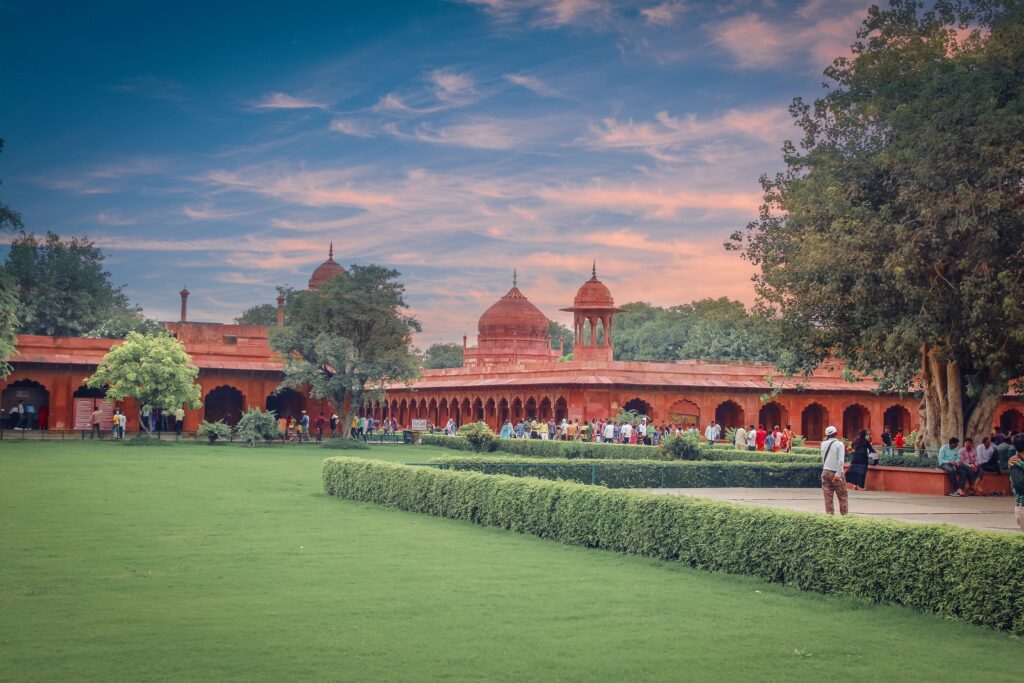
The garden city in India is Bangalore, also known as Bengaluru. It earned this nickname due to its abundance of parks, gardens, and green spaces.
Here are some reasons why Bangalore is called the Garden City:
1. Historical legacy: The British colonial rulers in the 1800s actively planted trees and created parks throughout the city, establishing its foundation as a green haven.
2. Public parks and gardens: Bangalore boasts numerous public parks and gardens, offering residents and visitors recreational spaces amidst the city’s bustle. Popular examples include Cubbon Park, Lalbagh Botanical Garden, and Bangalore Palace Grounds.
3. Urban forestry: Bangalore has a strong focus on urban forestry, planting trees along avenues and in public spaces. This initiative contributes to air quality improvement and adds to the city’s aesthetic appeal.
4. Private gardens and green spaces: Many homes and apartment buildings in Bangalore feature private gardens and balconies filled with greenery, contributing to the overall green cover.
5. Initiatives promoting greenery: The city government and various organizations regularly organize tree planting programs and environmental awareness campaigns, further emphasizing its commitment to maintaining its green image.
Though Bangalore has faced challenges of urbanization and development pressure, it continues to strive to maintain its reputation as the Garden City of India. Its dedication to promoting green spaces and preserving its natural heritage is commendable.
Famous gardens in India
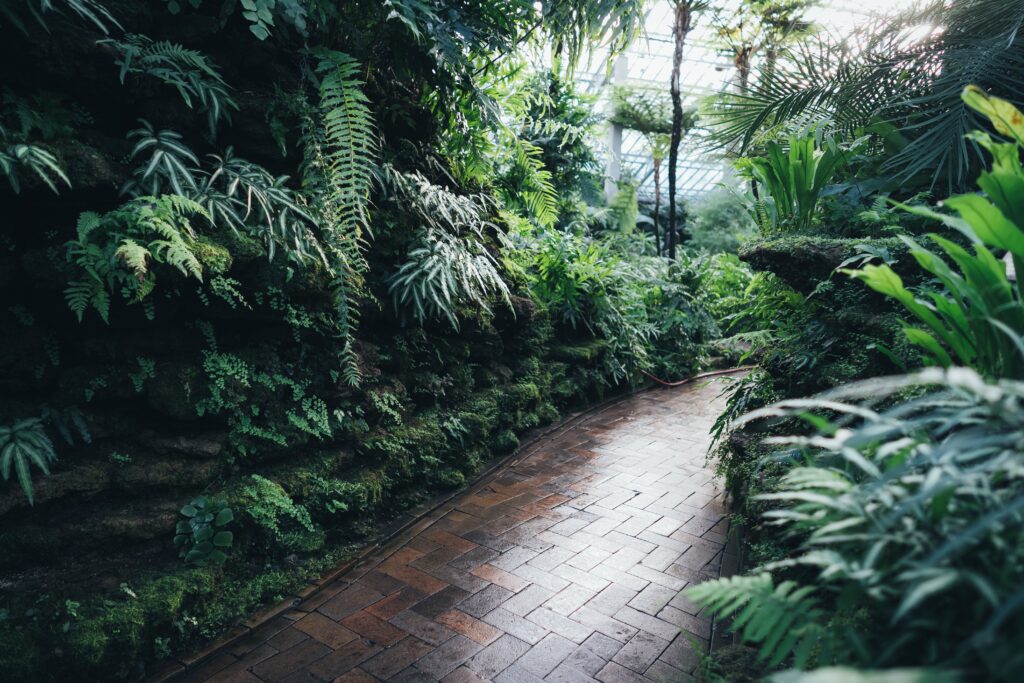
India boasts a rich tapestry of gardens, each offering a unique experience and reflecting the diverse cultural and historical heritage of the country. Here are some of the most famous gardens in India:
Formal Gardens:
Mughal Gardens, Srinagar: Exquisitely landscaped gardens within the Mughal complex in Srinagar, showcasing terraced layouts, colorful flowers, and stunning views of the Dal Lake.
Pinjore Gardens, Chandigarh: Designed by the Mughal emperor Aurangzeb, these terraced gardens feature pavilions, fountains, and a variety of flora, offering a glimpse into Mughal garden art.
Shalimar Bagh, Srinagar: One of the oldest Mughal gardens in India, famous for its symmetrical layout, cascading fountains, and lush greenery, earning it the nickname “Garden of Love.”
Nishat Bagh, Srinagar: Known as the “Garden of Pleasure,” Nishat Bagh features a terraced design with cascading water channels and breathtaking views of the Mughal architecture and the Himalayas.
Lalbagh Botanical Garden, Bangalore: One of the largest botanical gardens in Asia, housing a diverse collection of over 1850 plant species, including rare and endangered plants.
Hill Stations and Mountain Gardens:
Ooty Botanical Garden: Situated amidst the Nilgiri Hills, this garden offers a stunning setting with over 650 plant species, including a large collection of roses.
Munnar Tea Gardens: Rolling hills covered with lush green tea plantations create a picturesque landscape in Munnar, offering breathtaking views and tea-tasting experiences.
Darjeeling Tea Gardens: The Darjeeling hills are renowned for their iconic tea gardens, offering a beautiful sight and a chance to explore the tea-making process.
Other Notable Gardens:
Acharya Jagadish Chandra Bose Indian Botanic Garden, Kolkata: The oldest botanical garden in India, housing over 14,000 plant species and showcasing fascinating historical and scientific significance.
Lodi Gardens, Delhi: A historical park in the heart of Delhi, offering serene green spaces, tombs of Mughal rulers, and a peaceful escape from the city’s chaos.
Hanging Gardens, Mumbai: Terraced gardens on Malabar Hill offering cascading waterfalls, panoramic views of the city and the Arabian Sea, and a unique urban green space.
Rock Garden, Chandigarh: A unique sculpture garden created by Nek Chand using recycled materials, showcasing intricate artwork and repurposed waste into a visually stunning attraction.
Tulip Garden, Srinagar: The largest tulip garden in Asia, offering a vibrant display of millions of tulips during the spring season and attracting visitors from around the world.
This list only scratches the surface of the amazing gardens found throughout India. Each garden offers its own unique charm and historical significance, making them treasures to explore and appreciate the beauty and diversity of Indian horticulture.
Biggest garden in india
The biggest garden in India, and actually one of the largest in the world, is the Acharya Jagadish Chandra Bose Indian Botanic Garden (formerly known as the Indian Botanic Garden and the Calcutta Botanic Garden). Located in Shibpur, Howrah, near Kolkata, it boasts several impressive features:
- Area: Over 270 acres (109 hectares) of lush greenery, making it one of the largest botanical gardens in Asia.
- Plant collection: Home to over 14,000 plant species, including rare and endangered plants, medicinal herbs, and exotic flora.
- Historical significance: Established in 1787, it is the oldest botanical garden in India and has played a crucial role in plant research, conservation, and education for over two centuries.
- Iconic landmarks: Features the Great Banyan Tree, one of the largest trees in the world by aerial root spread, and other historical landmarks like the Great Palm Avenue and the Herbarium.
- Educational and recreational value: Offers educational programs, guided tours, and research facilities for students and researchers, while simultaneously serving as a recreational space for visitors to enjoy the beauty of nature.
Therefore, the Acharya Jagadish Chandra Bose Indian Botanic Garden stands as a testament to India’s rich botanical heritage and commitment to preserving natural diversity.
List Out Worldwide Biggest famous gardens
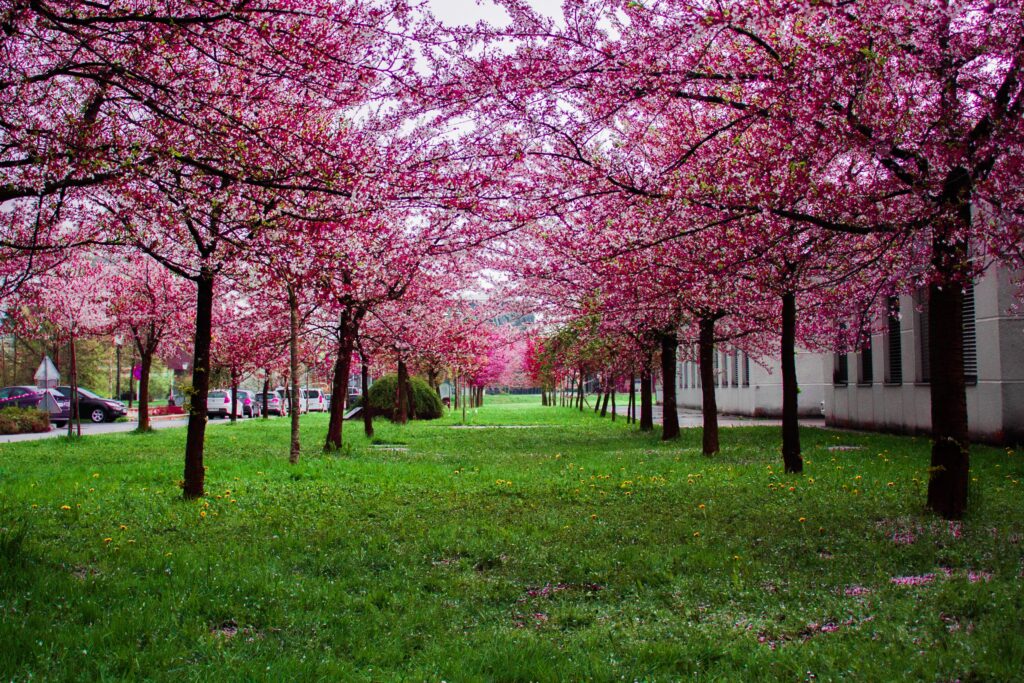
Here’s a list of some of the biggest and most famous gardens in the world:
1. Keukenhof, Netherlands: Known as the “Garden of Europe,” Keukenhof boasts over 7 million flowering bulbs planted across 79 acres (32 hectares), creating a dazzling display of color and fragrance during spring.
2. Kirstenbosch National Botanical Garden, South Africa: Situated on the eastern slopes of Table Mountain, Kirstenbosch covers 528 hectares (1,300 acres) and showcases indigenous South African flora, including fynbos, proteas, and cycads.
3. Singapore Botanic Gardens, Singapore: This 156-hectare (386-acre) garden complex comprises three distinct gardens: the National Orchid Garden, the Jacob Ballas Children’s Garden, and the Tanglin Core. It also holds the world’s largest collection of orchids.
4. Royal Botanic Gardens, Kew, United Kingdom: Spanning over 300 acres (121 hectares), Kew Gardens boasts a vast collection of living plants, including rare and endangered species, and serves as a leading research center in plant science.
5. Butchart Gardens, Canada: Nestled in British Columbia, Canada, these 55-acre (22-hectare) gardens are renowned for their vibrant floral displays, sunken gardens, and impressive water features.
6. Dubai Miracle Garden: This 72-hectare (178-acre) garden in Dubai is known for its unique floral displays, featuring sculptures and structures entirely made of flowers. It holds the Guinness World Record for the world’s largest floral sculpture.
7. Gardens by the Bay, Singapore: This 101-hectare (250-acre) garden complex features futuristic “Supertrees,” themed gardens, and immersive experiences, making it a popular tourist destination.
8. Versailles Gardens, France: Designed by renowned landscape architect André Le Nôtre, these 815-hectare (2,014-acre) gardens surrounding the Palace of Versailles are renowned for their grand scale, geometric design, and elaborate fountains.
9. Huntington Library, Art Collections, and Botanical Gardens, California, USA: This 120-hectare (300-acre) complex houses a library, art museum, and diverse botanical gardens, showcasing collections of plants from around the world.
10. The National Arboretum, Washington, D.C., USA: Spanning over 445 hectares (1,100 acres), this arboretum boasts a collection of trees, shrubs, and plants from various regions of the world, including rare and endangered species.
This list is not exhaustive, and many other stunning and expansive gardens exist throughout the world. Each garden offers a unique experience and showcases the beauty and diversity of plant life.
